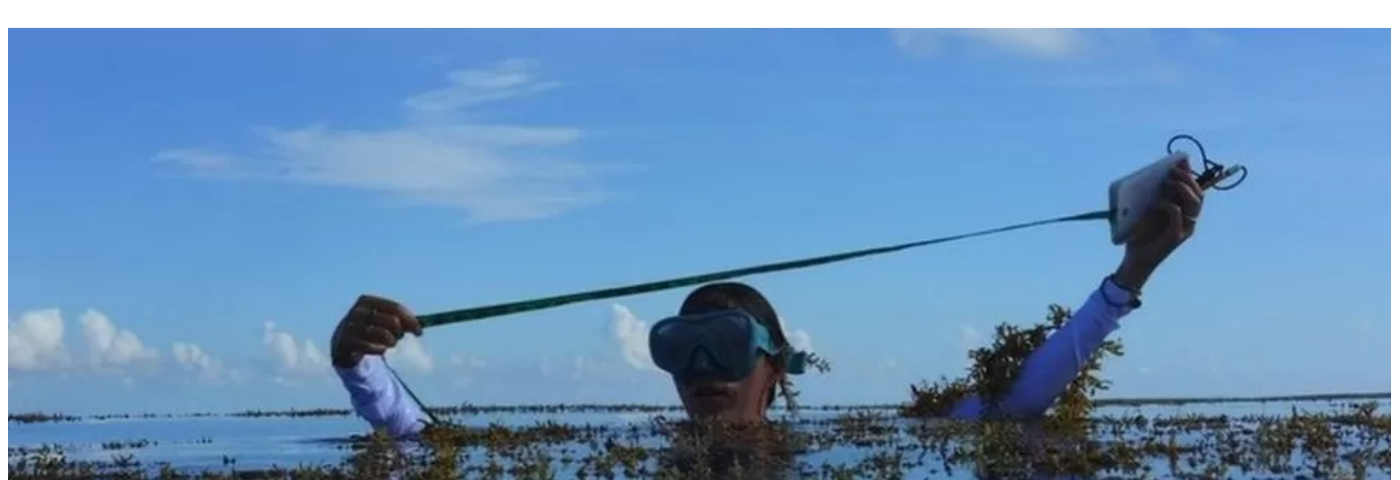The role of a seaweed farm in limiting global warming
An enormous seaweed farm spinning in a natural ocean eddy can help absorb a billion tonnes of carbon out of the atmosphere every year and sink it to the ocean floor to prevent any harm. This is the vision of a British businessman who plans to have this solution running by 2026. We need all the help we can get, and carbon capture is an ideal solution to limit global warming. However, capture schemes are relatively low-scale and have seen limited success. Promotion should be bold and big to attract investors. John Auckland, a businessman, is confident that his Seafields floating farm will be able to pull enough CO2 out of the air and give its backers carbon credits at the same time. The floating farm is 55,000 sq km (21,200 sq miles) big and aims to capture 50 gigatonnes of carbon dioxide annually. It is currently undergoing technological testing in the Caribbean and Mexico. A marine biologist named Victor Smetacek came up with the idea of growing seaweed in gyres, which are huge, rotating ocean currents. He says that gyres collect all kinds of stuff in the middle, including floating plastics, which gave Seafields the idea of hemming in its crop of sargassum.
Get your ticket for Oi Americas
Join the oceanology community in San Diego from 14–16 February 2023 and discover emerging marine science technology.
Carbon capturing seaweed farm in the South Atlantic
Sargassum gives off a foul stench which affects the Caribbean’s tourism. This could be prevented with the help of Seafields floating farm. The team plans to syphon up nutrients from the ocean depths to feed the floating farm, which will prevent Sargassum from getting nutrients. The surface water trapped in gyres is very salty and low in nutrients because of evaporation from the subtropical sun. The gyres will then slowly turn and glide over another ocean layer that is colder and richer in nutrients. The plan is to connect the nutrient-rich, deep water with pipes, bring the water up, and let it warm up to hold the seaweed in place.
How will the seaweed farm capture carbon?
Seafields’ team will begin testing its technology in early 2023. In 1956, the salt fountain was recreated, and if it does work to scale, a bumper crop of sargassum will surface as per Prof. Smetacek’s prediction. With seaweed, one can harvest it with a combine harvester, which will bale the crop up and send it down to the sea floor. The carbon will remain fixed in the seaweed’s structure and will not rot.
Meanwhile, Seafields’ financial backers plan to sell credits for captured carbon on the world’s carbon markets. This will help businesses buy up carbon reductions made elsewhere. However, Seafields should be able to meet the expectations of critics of the carbon market. Dr. Nem Vaughan, associate professor in climate change at the University of East Anglia, wants to get more data before believing in the claims of Seafields’ gigatonne-scale removal technique. He is also concerned about how Seafields will contain potentially damaging seaweed out in the South Atlantic and if salt fountains can weather all conditions. Vaughan says that there are other ways that are less technologically challenging to curb climate change. John Auckland agrees with this; however, he believes that Seafields is worth trying.
Now more than ever is the time to look after our oceans and waterways. Be a part of change by connecting with the global ocean technology community at Oceanology International Americas. Stay ahead of the curve in ocean technology by registering today!
Get your ticket for Oi Americas
Join the oceanology community in San Diego from 14–16 February 2023 and discover emerging marine science technology.


